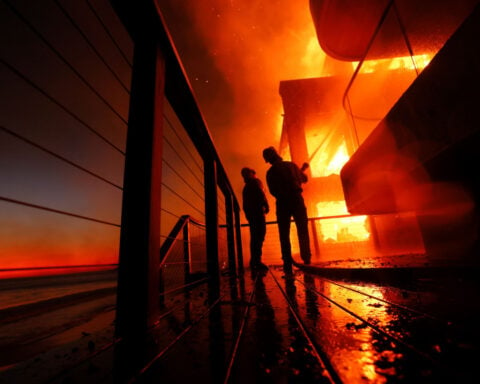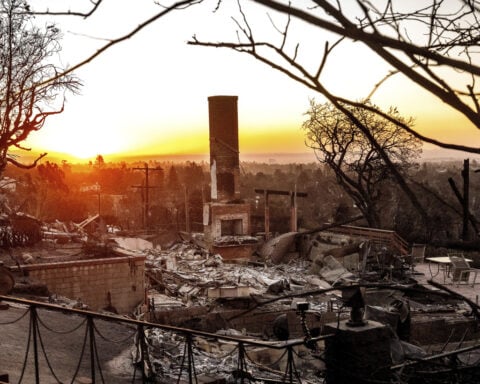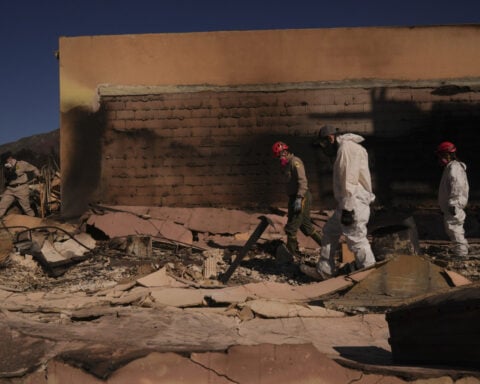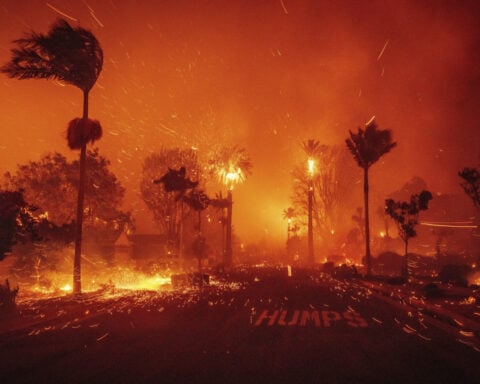By Valerie Volcovici
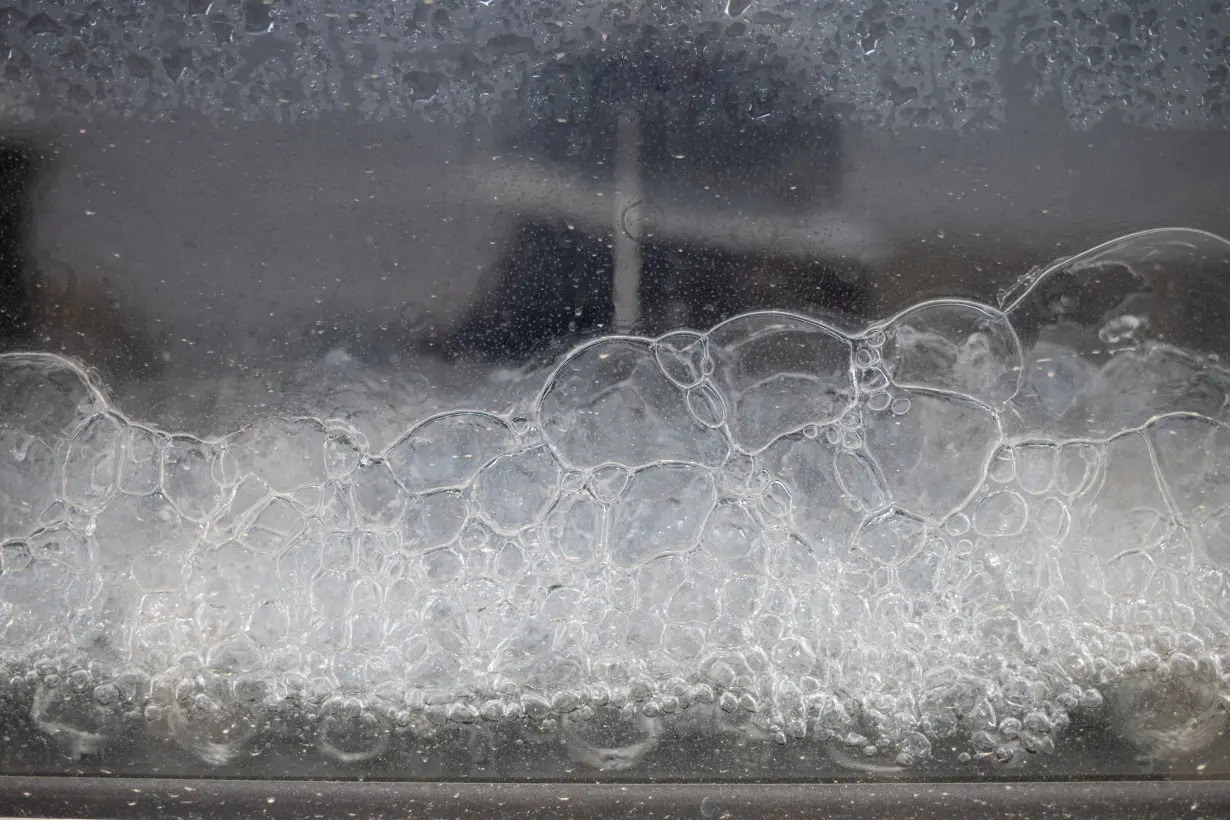
JAL, New Mexico (Reuters) - Flying over the desert landscape of southeastern New Mexico in a four-seat helicopter, Stephen Aldridge could count around a dozen man-made lagoons brimming with toxic wastewater glistening between drill rigs and pumpjacks.
While it is a growing hazardous waste problem from the region’s booming drilling industry, the mayor of the tiny town of Jal - nestled near the border with Texas in the heart of U.S. oil country - viewed the sweeping scene as an opportunity: a source of water in the second-biggest oil producing state suffering from worsening drought.
"Our future is going to depend on the future of that produced water," he said.
Aldridge is among a growing group of New Mexico politicians who want the state to develop regulations allowing for the millions of gallons of so-called produced water gushing up daily alongside the Permian basin's prolific oil and gas to be treated and used, instead of discarded, and who are encouraging companies to figure out how to make it happen cheaply, safely and at scale.
In 2022, the oil and gas industry in New Mexico produced enough toxic fracking wastewater to cover 266,000 acres (107,650 hectares) of land a foot (31 cm) deep. While the state’s drillers reuse over 85% of their produced water in new oil and gas operations, the rest is pumped underground.
With injection wells filling up, however, New Mexico has begun restricting deep-underground disposal, which has triggered earthquakes. The state is now expected to export over 3 million barrels of that water per day by the end of 2024 - a strange dynamic in a water-scarce state.
Around 10 wastewater treatment firms in New Mexico are taking up the challenge under a state-supported pilot program that has so far spurred projects to grow crops like hemp and cotton and irrigate rangeland forage grasses.
While completed pilots have shown the technology works, it is currently too expensive for widespread adoption.
The companies and their backers also face a tough political battle. The debate over how this water should be used is one of the most divisive political questions facing New Mexico, with opponents mainly worried about the unintended human health consequences and subsidizing the oil industry's waste issue.
New Mexico’s Democratic Governor Michelle Lujan Grisham introduced legislation late last year that would have created a strategic water reserve out of treated produced water. The bill was defeated by state lawmakers but will be brought up again in the next legislative session in January.
Neighboring Texas is also dealing with growing problems around wastewater disposal, including an epidemic of exploding orphan wells as subsurface pressure rises, raising worries about a potential crackdown there too. The Permian basin, which straddles Texas and New Mexico, is the top U.S. oilfield.
"It’s getting close to this point of criticality," said Rob Bruant with energy consultancy B3.
Other states such as Colorado and California already use treated produced water in small amounts for agriculture. But New Mexico's situation is unique because the volumes are overwhelming and the water itself needs much more intensive treatment because it is unusually briny - three times saltier than the Pacific.
CRYSTAL CLEAR FISH TANKS
Aldridge stands out in dusty New Mexico, with shoulder-length white hair and a bushy beard, often wearing bright West African tunics.
His chopper tour in late-July was part of a site visit to one of the state’s wastewater treatment pilot project run by a company called Aris Water Solutions.
At the mobile trailer field office of the Aris project, Aldridge admired fish tanks on display filled with crystal clear water run through Aris’s treatment technology, and home to around two dozen minnows.
Before it is treated, though, the water is dangerous. Employees on site are required to wear flame retardant clothing and carry portable monitors to detect deadly gases.
The untreated water is trucked in by local drillers and held in two large storage tanks before getting piped through a membrane filter to remove solids, and then distilled.
The process yields clear water, and leaves behind a highly toxic rust-colored mud that is reinjected underground at a registered saltwater disposal site.
The water, Aris says, is free of pollutants or radionuclides, and fit for industrial and agricultural uses. Starting next year, Aris will begin growing non-food crops like cotton as part of a $10 million grant it won this year from the U.S. Department of Energy.
"We look at the concept of desalinating produced water and creating a new water resource for the Permian region in a similar way to how the water industry was able to demonstrate that municipal wastewater could be safely treated and used for many purposes that society could become comfortable with," said Lisa Henthorne, chief scientist at Aris.
The main problem for Aris and others is cost. A barrel of Aris’ treated water costs over $2 a barrel, many times higher than what industrial or agricultural water users typically pay. Aris says its goal is to bring costs down to $1 - still representing a big bill for users.
Massachusetts-based Zwitter, which recently finalized a separate water treatment pilot project in New Mexico, said treated water may never be cheap, but could become viable if it becomes cheaper than disposal.
"It is unlikely that agriculture or other water users will be able to pay more than cents per barrel. Therefore, the value of desalination will be driven by saving disposal costs and could be from $2 to $3/BW (per barrel of water) in the future," it said in the final report on its project.
Disposal currently costs cents per barrel, but that could rise as injection sites fill up and waste needs to be trucked or piped ever further.
Aris has strategic agreements with Permian oil majors including Chevron, ConocoPhillips and Exxon Mobil to develop and pilot technologies for treating produced water for potential reuse.
Exxon subsidiary XTO has also partnered with Infinity Water Solutions, another water treatment firm running a pilot project in the Permian.
"I can tell you, the H2O molecule has no value until you run out of it," Infinity CEO Michael Dyson added.
TERRIFIED OF GETTING IT WRONG
Avner Vengosh, a professor of environmental quality at Duke University, said unknown safety risks are also a key concern.
Under federal law, U.S. producers are not required to disclose all the chemicals they introduce to oil wells while drilling, raising worries that water treatments and testing are missing some dangerous components.
"There are a lot of technologies that can treat the water but the question is how can we evaluate all possible contaminants in produced water? I’m not saying it’s impossible, but I am saying it needs to be done correctly," he said.
Infinity's Dyson agreed the industry needs to tread carefully.
"We know we're only going to get one real chance of getting this right, and if anything, I think most of us are terrified of getting it wrong," he said.
The state’s environment department is updating its 2019 Produced Water Act with the aim of firming up water reuse rules and expanding research and development for use outside the oil and gas sector.
During a week of hearings on the effort in early August, divisions were huge, with environmental groups and some scientists questioning how safe the end-product could be.
Daniel Tso, a former Navajo Nation Council member, told Reuters the Navajo had been stung before in New Mexico when decades of uranium mining on their land in the last century led to widespread radioactive pollution.
“Now the industry is trying to make this a public problem and the public has to really scrutinize the effects,” he said of produced water.
James Kenney, New Mexico’s environment secretary, told Reuters that the advances in technology over the last five years give him confidence that treated produced water can be safe, but acknowledged New Mexico’s poor record.
"We have to acknowledge our history of things like uranium mining, the promise of wealth and the failure to protect health. So communities are right to be skeptical," he said.
For Aldridge, though, the more he learns about wastewater treatment technology, the more willing he is to fight for the state to open up more uses for the water.
"Am I 100% convinced? No, but they're taking a step to convince me and I need to take those steps with them," he said.
His own rural town of Jal, he said, could become home to "industries of the future" like data centers or green hydrogen projects, businesses that need ample supplies of water.
Or it could dry up, like the drilling industry will when the Permian empties of oil and gas.
“I just can't abide by the idea that small rural communities like Jal can just vanish."
(Reporting by Valerie Volcovici; Editing by Richard Valdmanis and Marguerita Choy)

 Body count from South African mine siege rises to 60
Body count from South African mine siege rises to 60
 US importers rush in goods from China as Trump tariff threat looms
US importers rush in goods from China as Trump tariff threat looms
 China's RedNote: what you need to know about the app TikTok users are flocking to
China's RedNote: what you need to know about the app TikTok users are flocking to
 Novak Djokovic breaks a tie with Roger Federer for the most Grand Slam matches in tennis history
Novak Djokovic breaks a tie with Roger Federer for the most Grand Slam matches in tennis history
 Japan finance minister flags action against excessive foreign exchange movement
Japan finance minister flags action against excessive foreign exchange movement
 British author Neil Gaiman denies ever engaging in non-consensual sex as more accusers come forward
British author Neil Gaiman denies ever engaging in non-consensual sex as more accusers come forward

